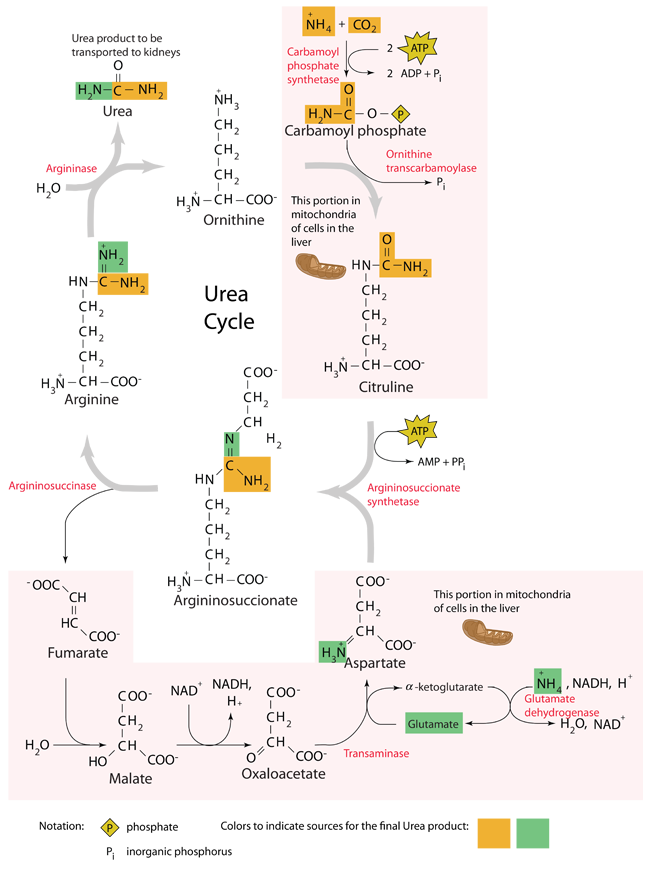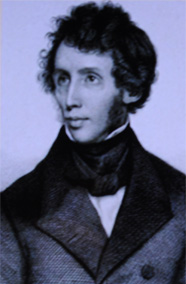The Urea Cycle
 | The urea cycle is a cycle of biochemical reactions that produces urea (NH2)2CO from ammonia (NH3). The urea cycle converts highly toxic ammonia to urea for excretion. This cycle was the first metabolic cycle to be discovered (Hans Krebs and Kurt Henseleit, 1932), five years before the discovery by Krebs of the TCA cycle (also known as Krebs cycle and citric acid cycle). The urea cycle takes place primarily in the liver and, to a lesser extent, in the kidneys. |
The chemical process essentially combines two ammonia molecules with a carbon dioxide molecule to make a urea molecule. The cycle of reactions that produces a molecule of urea to send to the kidneys uses the molecule ornithine as a "carrier" to collect and deliver the ammonia as output in the form of urea. Most of the structure of ornithine is present in each of the intermediate steps and is reformed as ornithine to repeat the cycle after having released the urea molecule for its journey to the kidney and excretion.
The liver is the main location for the urea cycle, where part of the cycle and supporting reactions occur in the mitochondria of liver cells and the remainder in the cytosol of those cells. Following the construction of the urea, it is transported in the bloodstream to the kidneys where the urea is filtered out for excretion. The measured level of the blood urea nitrogen (BUN) is a sensitive test of kidney function since filtration and excretion are impaired if the kidneys are malfunctioning. Another blood test to determine the concentration of ammonia is a sensitive test of liver function since a normally functioning liver would keep the ammonia level low.
| More detail on the urea cycle |
| Urea cycle Wiki |
Biochemical concepts
Chemistry concepts
Reference
Matthews, van Holde and Ahern
Ch 20
| HyperPhysics*****Chemistry | R Nave |


